In the end, it wasn’t the beatings, the sexual abuse, the hunger or the ugly words that broke Carrie Turnquist; it was the indifference of others.
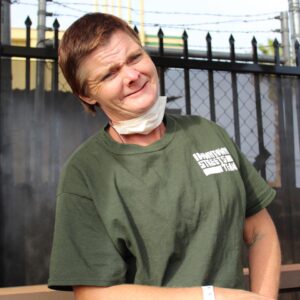
After she was badly beaten when a passenger in a passing car jumped out, pulled her hair back and began punching her in the face and head, she lay on the sidewalk while people watched and did nothing.
“I felt like a dog that had been injured and tossed to the side of the road,” she said. “Nobody cared. Nobody offered to help. I felt like my life didn’t matter to anyone. I was badly bruised and bleeding and had to walk by myself to Doctor’s Hospital. I knew I had to get out.”
Carrie was beaten on South 9th Street in Modesto on February 15, 2017, in an area so notorious for drugs, crime and prostitution it was featured in a 2016 documentary film entitled, “The Nine.” At the time, she had been a Modesto resident for over twenty years, most of them homeless.
Carrie had been beaten before, off and on all her life, but never this severely. The daughter of an alcoholic mother who belittled and blamed her, and an often-absent father, she felt rejected almost from birth.
Born 44 years ago in Salinas, California, Carrie’s world came apart when her father died, followed four weeks later by her sister. Afflicted with a severe overbite and a tendency to put on weight, she was a natural target for the cruel ridicule of kids and classmates, ridicule that continued into adulthood.
“I looked like a donkey or a rabbit,” she said, “and at one time I weighed 400 pounds.”
By her late 20s, she was a drug-using criminal with a specialty as designated driver of getaway cars for thieves and robbers. Attempts to establish stability and security through marriage and work were thwarted by a husband who stole and squandered money. She fell into homelessness repeatedly, even after stints with Sacramento’s Loaves and Fishes program.
Carrie’s life began to change when Beard Brook Village opened for permitted camping in the fall of 2018. In 2019, not long after Beard Brook closed down, Carrie moved with hundreds of others to the Modesto Outdoor Emergency Shelter (MOES).
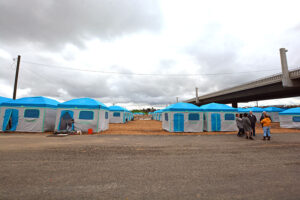
For a woman who had been belittled, ridiculed, beaten or ignored most of her life, MOES became a haven, even though she still suffered from occasional bullying and taunting. The biggest difference for Carrie was she found people who listened and tried to help.
“Doug Holcomb was wonderful,” she said of the camp’s director of logistics and support. “He listened to me and he really cared. Red Hawk [Darnelle] was always there when I needed him. That lady at the Spotlight Café [Angel Huerta] is a miracle worker and so is the man with the red truck [Frank Ploof]; they are angels,” she said of the staff and volunteers who were an almost daily presence at the campsite.
For almost the first time in her life, Carrie began to feel a sense of self-worth and dignity. At times, though, she still felt helpless and vulnerable. She also got a much-needed rest.
“You never have a chance for R&R [rest and relaxation] when you’re homeless,” she said. “You’re always being told to move from wherever you are. You can’t even get a good night’s sleep.”
At MOES, Carrie qualified for dental assistance. Later, she received new teeth and corrections for her overbite. She lost the teeth when they were confiscated by a self-appointed custodian of the Tuolumne River.
“I was fishing along the river one day when I left my stuff for a few minutes,” she said. “When I came back this man in a pontoon boot had taken my pole and belongings. I asked to at least give me back my teeth and the medicine for my dog, but he told me I had no rights and didn’t belong along the river.”
Losing her teeth was a devastating blow, but it was even worse to lose the medication for her beloved dog, Peanut.
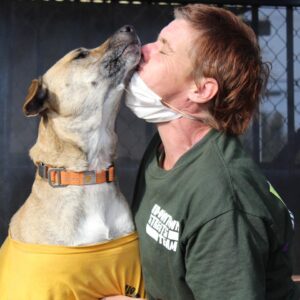 “For a lot of homeless people, their dog is all they have,” she said. “They would commit a major felony to get their dog back from the pound. That’s why it’s so hard for homeless people when they have to give up their dog to go into a shelter or even when they have to put it in a cage at night.”
“For a lot of homeless people, their dog is all they have,” she said. “They would commit a major felony to get their dog back from the pound. That’s why it’s so hard for homeless people when they have to give up their dog to go into a shelter or even when they have to put it in a cage at night.”
When Carrie moved into a local shelter after MOES closed, she had a long talk with Peanut about having to stay in a cage at night.
“I kept telling her everything was all right and I was still there for her,” she said.
Carrie was able to adjust to having Peanut in a cage, but had difficulty understanding some of the rules at the shelter, especially when the Covid pandemic brought about more complicated requirements.
“I got kicked out when they thought I was exposed to Covid. All I asked them was how to understand exposure. I said that ‘does it count as exposure if you talked to someone who talked to someone who talked to someone who had been exposed.’ I didn’t know what counted as exposure.”
Still struggling to adjust to shelter living, Carrie found the path she’d been looking for when she joined the Downtown Streets Team (DST).
DST offers a deceptively simple program with a remarkable record of success getting homeless people off the streets.
“We don’t have a handbook,” said DST Project Manager Meggan Clifford. “People grow organically from peer inspiration and instruction.”
Rules at DST are simple.
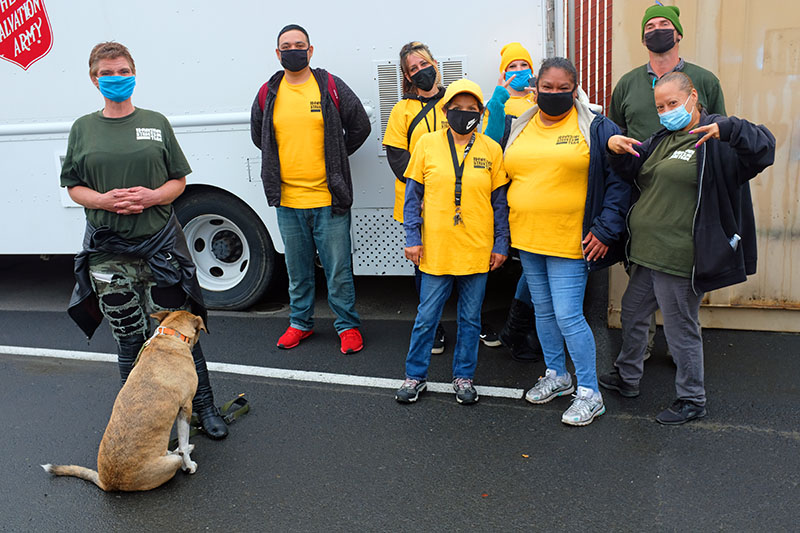
The most important rule, said Clifford, is, “show up. Once someone joins, all we say at first is, ‘show up, and walk with the team.’” At first, there are no other requirements, not even a drug test.
“Sometimes we have to send someone home,” said Clifford, “but not often.”
DST is designed to get homeless people off the streets and into housing by means of gainful employment. One key to its success is buy-in from team members, who volunteer to join.
Volunteers join teams that pick up trash. They agree to receive stipends in the form of coupons redeemable at local retailers. Almost unconsciously, they learn simultaneously the value of work and necessary skills of resource management, i.e., how to manage money through the use of the coupons.
“It’s not enough to get people housed,” said Clifford, “you’ve got to teach them how to stay housed. The longer people are homeless, the less able they are to become self-sufficient, even when inside. We’ve had people go shopping for groceries then put the meat they’ve bought into cabinets. They don’t know it goes in the refrigerator.”
Designed to last a year, the DST program puts fundamentals like showing up ahead of filling out forms, traversing a labyrinth of services and care providers, and producing credentials and job histories. A basic principle is that useful work bestows dignity and self-respect, especially when guided by peers.
“We have 60 people in the Modesto program, and 40 on the waiting list,” said Clifford, attesting to the popularity of a program for people who often refuse help of any kind.
Ask Carrie Turnquist what she’s learned working with the Streets Team, and she says, “Meggan [Clifford] taught me I am valuable, worthy and important.”
Today, Carrie Turnquist proudly wears the green shirt of a team leader for the Downtown Streets Team. After qualifying for rental assistance, she has an apartment of her own.
She says, “I feel like a giant. I even understand now what happened to my mother. She went through so much I never understood. She’s a giant too.”
Like a lot of working people, Carrie has a routine for when she gets off work:
“I go home and I snuggle with Peanut,” she says. “I snuggle with Peanut.”

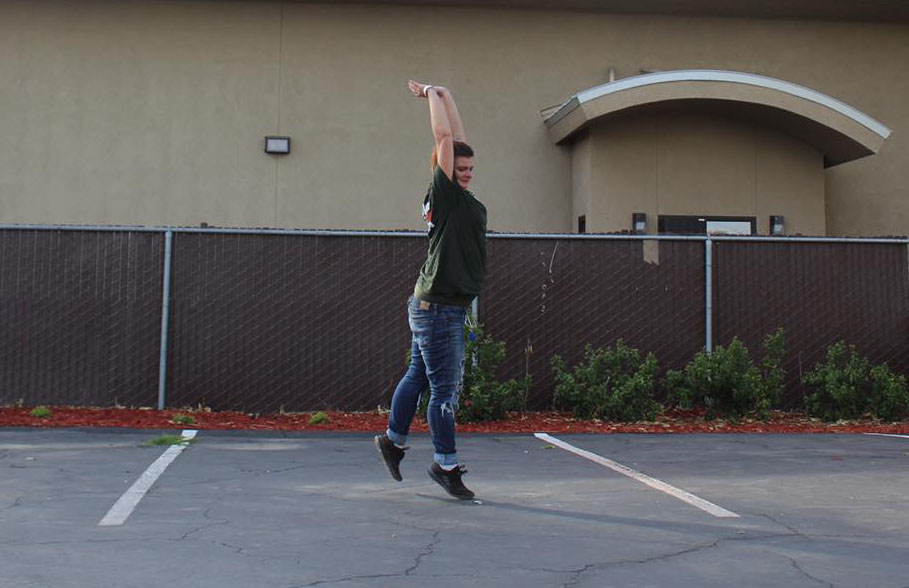
Beautiful!
YES, beautiful story, beautiful woman, Carrie Turnquist, beautiful dog, Peanut…
There is a lot revealed in this short Post, by our friend, Eric Caine.
I sincerely hope that the local governing bodies have eyes to see what makes people happiest and what makes them more miserable in their travels as people out of homes.
Eyes to see the ways they can be responsible and fulfill their obligations to those yet houseless.
As I read this very poignant (evoking a keen sense of sadness or regret) history, of where Carrie felt most at home in this valley community, until she was able to obtain a rented home, for herself and peanut, an overpowering sensation of needing to cry in deep deep heaves rose up in my chest. What have we done to our very own citizens in the role of playing gods in their lives. We supposedly have souls, bodies and spirits, every last one of us, but one has to wonder how it is that we are able to consistently live, while knowingly looking down upon any one, from our own supposed high perches, like the vultures we have become. I swear it is as if many of us would eat the very final piece of flesh off of the bones of the many people who have already been devoured by this wicked system we are all so willingly a part of. Shame on us for not finding suitable places for every last one of us to live securely and safely in peace on this earth.
Instead of standing up and yelling, “NO MORE, DO YOU HEAR US, NO MORE???!!!”
Shabbat, Shalom, on this 7th day of rest within Abba, God’s week. From sundown Friday until sundown on Saturday. May we all find rest and ask Abba what it is that He would have us do to relief this crisis of humanity, pejoratively called HOMELESSNESS.
Great heartfelt story Eric. The horrors of Carrie’s story are unfortunately way too common among the homeless population. What is uncommon, is the story of the Downtown Streets Team (DST) and their awesome employment program that wraps around folks in despair, like a warm blanket, and moves them along a path of self-fullment. Carrie is just one example of the many they have helped in several California cities. The DST can help many more in our community by following the steps below.
– First, disaggregate our homeless population into two groups: ones that have the potential for employment and those who don’t (disabled, seniors, etc.)
– Separate those that can work into two groups: those who could benefit from the DST experience and those who wouldn’t
– Develop a budget to employ the number of folks in the group that could be employed
– Find the money and projects to employ this group in a timely fashion
The DST must be an integral component of any homeless system that expects to move people experiencing homeless forward on the path to self-sufficiency.
Sad story well told.
Thank you all for your kind words as you all got a glimpse of my story and by all means life wasn’t grand but my life is grand full of life I love and give as if tomorrow will never come where you see ugly I see a beautiful disaster and all the great things I have encountered is because my eyes were open my mind willing to believe and my heart to trust my soul and love to give that’s the only thing nobody could take from me where I may of Fallin throught the system disregarded invisible I make forsure all who cross my path is greeted with a smile DST gave that hope and passion back I was lead home to live a life with my dog Thank you
THANK YOU, CARRIE AND PEANUT. YOU DID THE WORK. WE HAVE BEEN INVITED INTO YOUR STORY. YOU GAVE THE REST OF US HOPE.
PLEASE, GIVE YOUR FURRY CHILD, PEANUTS, HUGS AND KISSES FROM ALL.
Thanks to each of you for loving your fellow humans and treating them as such ❤This World can be.devastating. and a hand up is everything. Carrie I love.you sweet.girl.A!ways your.gay Life.is.to be.live.through. all the ups.amd.down .Celebrate. Your continuing success❤💋🌼
Thank you for simplifying and sharing your story. An easy read sheds light on this dark situation. You are very relatable. Good to hear from the ones who succeed. Well done. You have my heart and blessings. I give you and your dog a cuddle from me❤️